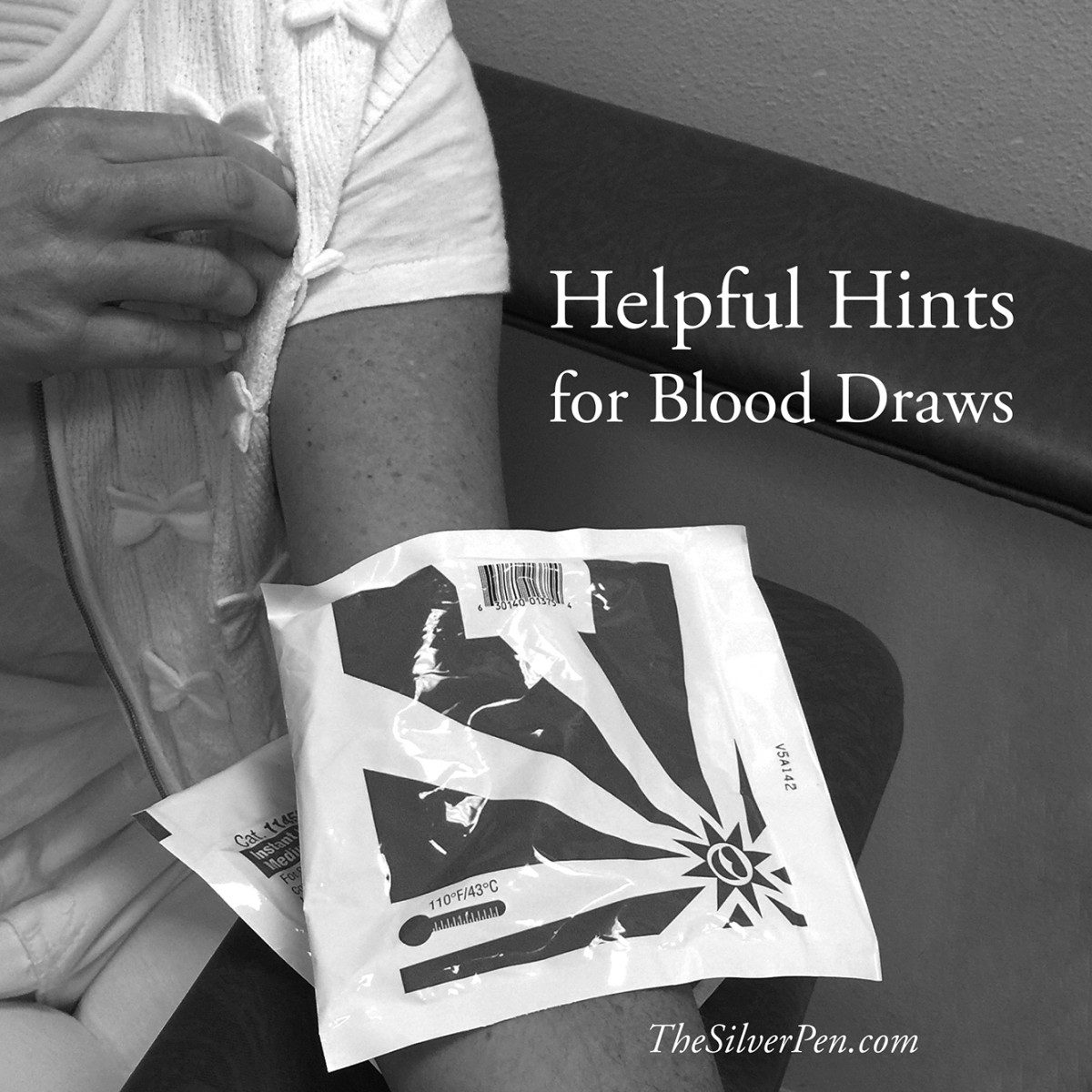Needlestick
I don’t like having needles stuck in my arms. That may be odd to read, but please allow me to explain. You see, pre-chemo, I had amazing veins. Prior to having my blood drawn or an IV placed, my veins would jump up and down vying to be picked for the stick saying, “Pick Me! Pick Me! Pick Me!”
After chemo, it’s as if they all became little turtles who crawled back into their shells to hide. In other words my veins are horrendous. However, that doesn’t change the fact that I still have to have my blood drawn and/or the occasional IV placed. The Silver Lining is that I know now how to do this. So, if you are just starting cancer treatment (or you just have needle phobia) here are a few of the basics that WILL help you when you have to have an IV (which I hope that you don’t by the way!):
1. You have alternatives. If you need daily medications running through your veins, lots of infusions, or your viens collapse easily there are other options to consider:
- An implantable port- surgically inserted under the skin of your chest or upper arm. Needles can be inserted into the port without poking you.
- Hickman catheter or “central line”- a tube is inserted into a large vien near your collarbone. It serves the same purpose as the implantable port in that medications can be given through the central line, avoiding needle pokes.
- It is SUPER important to keep the port or central line sterile at all times. If the area becomes red or sore at the insertion site, tell your doctor. These devices connect directly to your bloodstream and if an infection were to occur, it could be as life threatening as cancer.
2. Ask for the nurse, not the doctor. Yes, doctors know how to insert IV’s. However, they don’t do it nearly as often as nurses do. Therefore, nurses are much more likely to get the line started with the least amount of pain and fuss. Just sayin’…
3. Ask for a re-do. If your IV starts to hurt or is uncomfortable then politely ask the nurse to re-do it. This is a bit of a hassle, but the whole point of an IV is for the medications and/or fluids to go into your veins not into your interstitial space. Be stern, but polite and get it done ASAP.
4. Choose your IV site carefully. When the nurse asks you where you would like your IV to be placed (hand or forearm) consider how much you’ll be moving during the infusion. For example, I always got my IV’s put in my forearm because I knew that I was going to be typing or playing on a tablet with my hands during the infusion. The more you move the place where the IV is, the more sore it will become.
5. Plan ahead for bathroom breaks. Medications are almost always delivered with a big bag of saline solution and believe me… your bladder gets full real quickly! Trying to navigate out of your bed, around the corner, and down the hall while pulling an IV pole alongside you is really going to slow you down. So plan for it. Believe me it’s best for everyone.
6. Do Jumping Jacks. Seriously. I always look like a big bafoon doing jumping jacks before a blood draw, but 25 jumping jacks forces veins out of their hiding places and primes them for a stick. It is a fabulous secret bullet!
7. Heating Pads. Go about 15 minutes early before your appointment and ask for heating pads. Sometimes they are the real, old fashioned heating pads and other times, they are the little plastic ones like in the photo above. The key is putting heat above and below your elbow to get those veins a popping. This really helps!
Do you have any IV tips that you found helpful?



I always drank a lot of water before my chemo sessions so that I could keep my body well hydrated so that the needle would go in more easily. Great tips, wish I knew about the jumping jacks during chemo!
Great pont, Claudia. Thank you for sharing!
Tons & tons of water !!! (not tea, not juice, not coffee)
For sure, Wendy!
Make sure you’re well-hydrated before a blood draw. Veins stick out better when they’re full of fluid.
For sure, Michelle. Thank you for sharing!
Take good care!